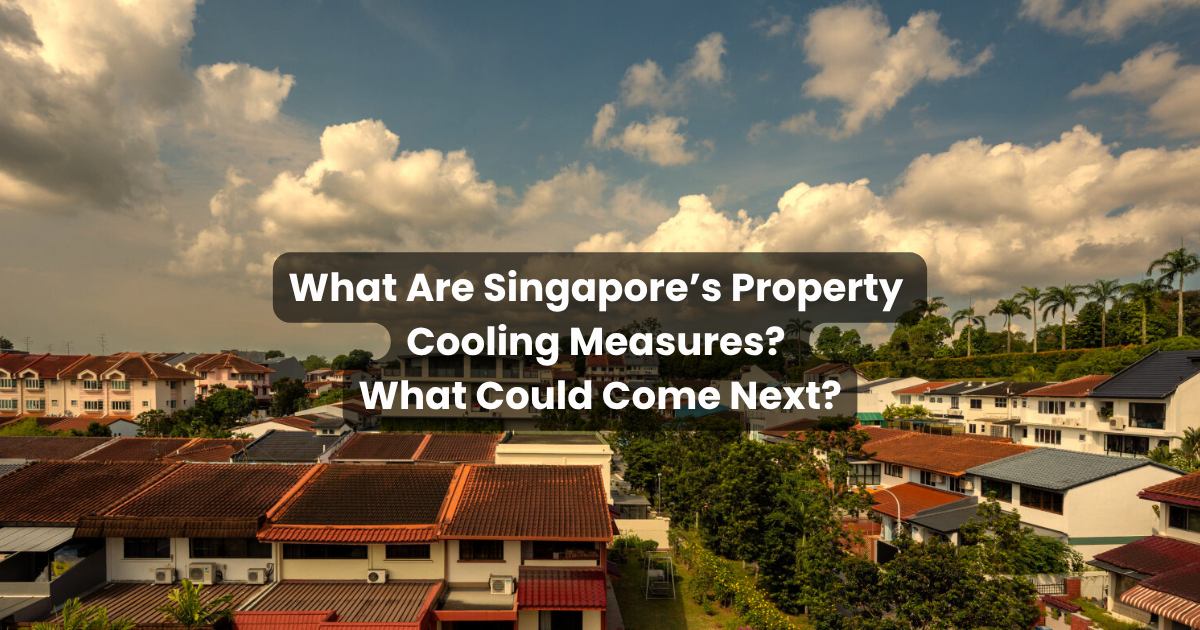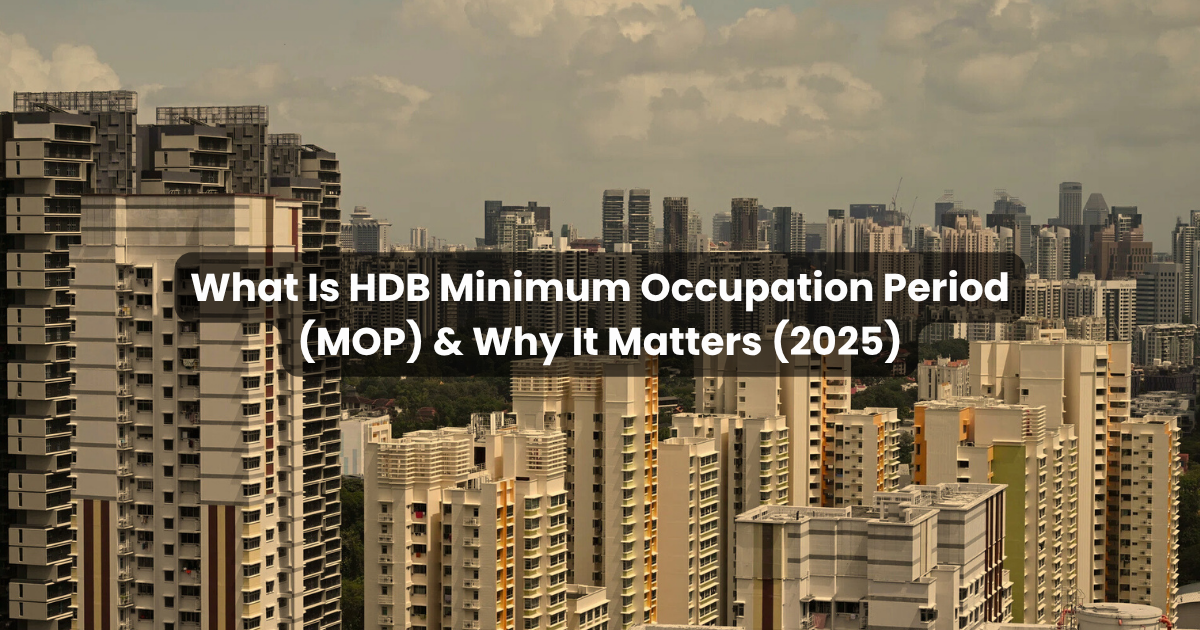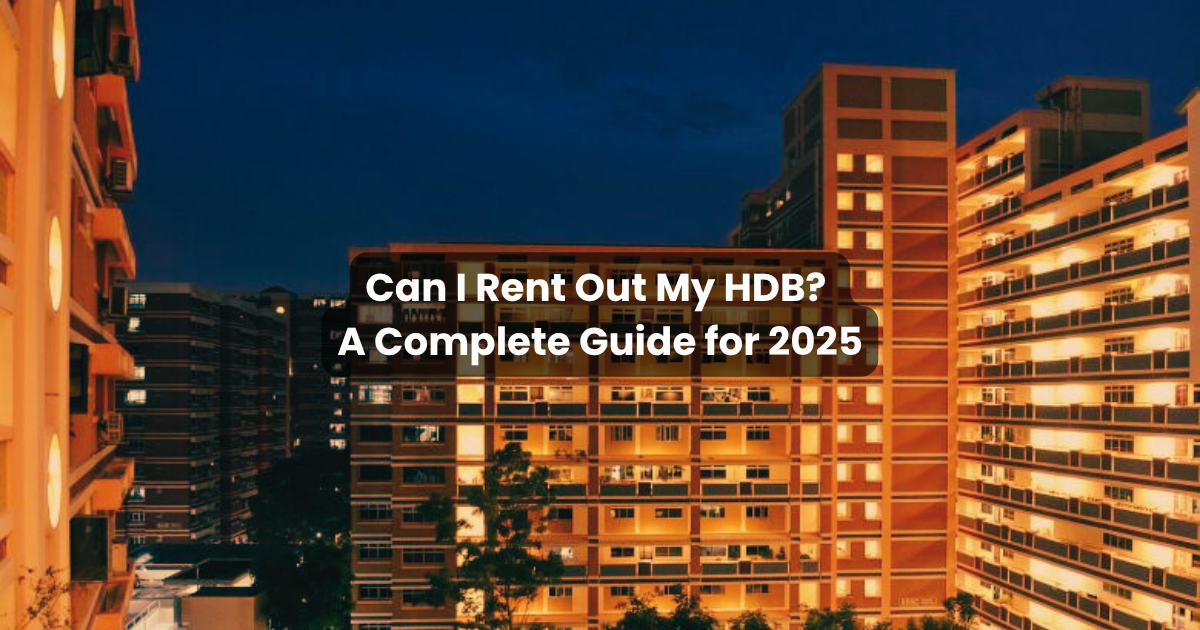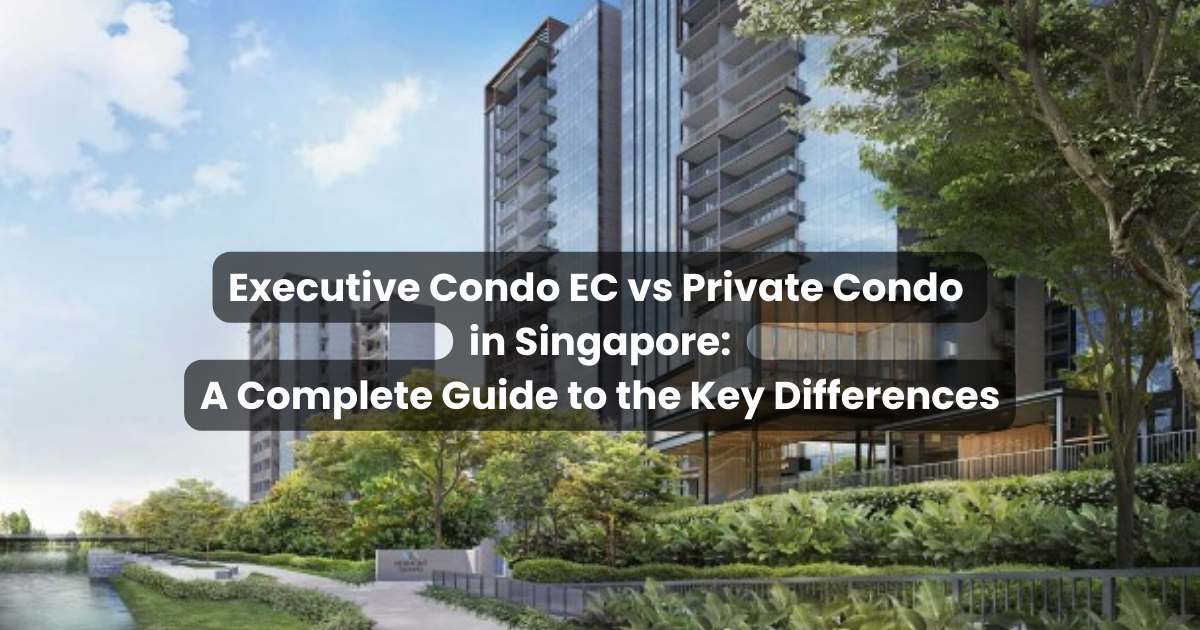- Insights & Updates
Latest News
By Chief Analyst
October 14, 2025If there’s one phrase every property buyer in Singapore has heard, it’s “cooling measures.”
Since 2009, the government has rolled out numerous rounds of policies to keep housing prices sustainable, prevent speculative bubbles, and protect long-term affordability.
Each round, from stamp duties to stricter loan rules, has reshaped how Singaporeans buy, sell, and invest. Yet despite these curbs, demand for homes remains robust. With the latest revision to the Seller’s Stamp Duty (SSD) in July 2025, many now wonder: what could be the next cooling measure?
This article explains what cooling measures are, how they evolved, the key rules currently in force, and what new policies might emerge as Singapore’s market enters its next phase.
What Are Cooling Measures?
Cooling measures are government interventions designed to prevent runaway property prices and maintain financial stability. They are jointly administered by the Monetary Authority of Singapore (MAS), the Ministry of Finance (MOF), and the Ministry of National Development (MND).
Rather than targeting any single buyer group, these measures act as guardrails, ensuring that property prices grow in line with income and economic fundamentals, not speculation or cheap credit.
Why Singapore Needs Cooling Measures
Singapore’s land scarcity, strong household balance sheets, and cultural emphasis on homeownership create a potent mix. Without regulation, prices could easily spiral beyond the reach of ordinary families.
Cooling measures therefore aim to:
- Curb speculative and multiple-property demand;
- Promote prudent borrowing and protect household balance sheets;
- Maintain affordability in public housing; and
- Safeguard the banking system from excessive mortgage exposure.
In short, these measures keep Singapore’s real-estate market healthy and sustainable, even amid global volatility.
A Brief History of Cooling Measures
Singapore’s modern cooling era began in 2009 during a global liquidity surge that sent home prices soaring. Since then, the government has intervened periodically to tame exuberance.
2009 – 2013: Containing Speculation
Stamp duties such as the Seller’s Stamp Duty (SSD) and Additional Buyer’s Stamp Duty (ABSD) were introduced, penalising short-term flipping and foreign investment demand.
2013 – 2018: Strengthening Financial Prudence
The Total Debt Servicing Ratio (TDSR) and Mortgage Servicing Ratio (MSR) were added to ensure borrowers stayed within prudent debt limits.
2018 – 2023: Cooling Investment Demand
As prices rebounded, ABSD rates were raised again; foreigners now pay up to 60%. Loan-to-Value (LTV) limits were also tightened.
2023 – 2025: Targeted Fine-Tuning
With prices stabilising, policy emphasis shifted to moderation. The latest move in July 2025, extending SSD holding periods and rates, shows that the government is still determined to curb speculative resales while allowing genuine homeowners flexibility.
Key Cooling Measures in Force Today (2025)
1. Additional Buyer’s Stamp Duty (ABSD)
A tax on second or subsequent property purchases aimed at deterring investment buying:
- Singapore Citizens: 0% (1st), 20% (2nd), 30% (3rd)
- Singapore PRs: 5% (1st), 30% (2nd), 35% (3rd)
- Foreigners: 60% (any purchase)
- Entities / Trusts: 65%
This single policy has been most effective at cooling foreign demand, especially in prime districts.
2. Seller’s Stamp Duty (SSD) – Updated in July 2025
SSD discourages speculative flipping by taxing the sale of residential property within a short holding period.
On 3 July 2025, the Government announced an enhancement effective for properties acquired on or after 4 July 2025, 12 am.
New SSD Schedule (Residential Property acquired from 4 Jul 2025):
Holding Period | SSD Rate |
Up to 1 year | 16 % |
> 1 year ≤ 2 years | 12 % |
> 2 years ≤ 3 years | 8 % |
> 3 years ≤ 4 years | 4 % |
More than 4 years | 0 % |
Previously, SSD applied only for three years at 12 %, 8 %, 4 %. The new structure extends the holding period to four years and raises rates by roughly 4 percentage points, signalling a tougher stance on quick sub-sales and short-term speculation.
HDB flats are unaffected, as they are already governed under the Minimum Occupation Period (MOP).
3. Loan-to-Value (LTV) Limits
Banks may lend up to 75 % of a property’s value for first-time buyers and 45 % for those with existing loans. These caps ensure buyers maintain equity buffers and reduce systemic risk.
4. Total Debt Servicing Ratio (TDSR)
Capped at 55% of gross monthly income, the TDSR restricts all debt obligations combined, such as mortgages, car loans, and personal loans, maintaining borrower resilience even if rates rise.
5. Mortgage Servicing Ratio (MSR)
For HDB and Executive Condominiums, the MSR limits monthly mortgage payments to 30 % of gross income. This ensures public housing remains affordable.
6. 15-Month Wait-Out Rule
Since 2022, private property owners selling their homes must wait 15 months before purchasing a resale HDB. This prevents sudden influxes of capital into the public housing market.
Have Cooling Measures Worked?
By most metrics, yes. Property prices have continued to rise but at a far more measured pace than in other global cities.
- From 2009 to 2025, Singapore’s private-home index rose ≈ 60 %, compared with >150 % in Hong Kong.
- Mortgage default rates remain under 1 %.
- HDB resale prices have stabilised after record 2022 highs.
These data points confirm that Singapore’s layered approach, mixing stamp duties, loan controls, and occupancy rules, has preserved market stability without crushing genuine demand.
Why More Cooling Measures Might Still Come
Despite moderation, several factors keep policymakers alert:
- High land bids by developers;
- Persistent luxury demand despite steep ABSD;
- Wage-price divergence income growth still trails property inflation;
- Tight rental supply, which can reignite investment interest.
If prices accelerate again once global rates ease, further tightening is plausible.
What Could the Next Cooling Measures Be?(Our views)
Drawing on historical patterns and MAS signals, these are the most probable next steps:
Higher Stress-Test Rates
One likely area is the stress-test interest rate applied under the Total Debt Servicing Ratio (TDSR). As global and local interest rates begin to ease, borrowing power will automatically rise, potentially fuelling higher bids for property. To counter this, MAS may raise the notional stress-test rate (currently 4%) to ensure buyers remain within prudent limits even as actual loan packages become cheaper.
Targeted Vacancy or Capital Gains Taxes
Another potential move could be the introduction of targeted vacancy or capital gains taxes. Similar to measures in markets like Australia and Canada, these would penalise owners who leave investment homes vacant for prolonged periods or who flip properties shortly after completion. This helps ensure genuine end-user demand and reduces the waste of scarce housing supply.
Even Longer SSD Holding Periods
A further possibility is a continued tightening of Seller’s Stamp Duty (SSD) rules. With the July 2025 update already extending the holding period to four years, policymakers could stretch it to five years if sub-sale activity or pre-completion flipping resurfaces. This would align with the government’s stated objective of discouraging short-term, speculative trading of residential units..
Refinements to ABSD Structure
Another area of scrutiny is the Additional Buyer’s Stamp Duty (ABSD) structure. As buyers become more sophisticated, some use legal and financial workarounds to reduce or avoid ABSD, particularly through decoupling, where one spouse transfers their property share to the other to requalify as a first-time buyer. This practice, while currently legitimate, undermines the intent of ABSD and could attract new restrictions in the next round. Possible actions might include a decoupling stamp duty, tighter eligibility criteria, or a mandatory waiting period after ownership transfer before another purchase can qualify for the first-time ABSD exemption.
Foreign Entity Disclosure Rules
Similarly, foreign entity and trust ownership may face greater transparency rules. Family offices and high-net-worth individuals using corporate vehicles to buy prime-district properties could be required to declare beneficial ownership more fully, or face differentiated ABSD tiers to close tax loopholes.
Rental-Market Controls
Finally, the government could look beyond the ownership market to address pressures in the rental sector. Rental-market controls, such as soft caps on public-sector rent hikes or incentives for developers to offer Build-to-Rent (BTR) projects, may be considered to stabilise leasing costs, especially for younger Singaporeans and expatriates.
In essence, the next wave of cooling measures will not be about slamming the brakes on the market but fine-tuning the rules to ensure fairness and sustainability. The focus is expected to shift from broad affordability controls to behavioural regulation, targeting loopholes like decoupling, speculative sub-sales, and opaque ownership structures that distort the intent of earlier policies.
Could Measures Ever Be Eased?
Historically, Singapore has occasionally relaxed measures when justified, for example, ABSD cuts in 2017 before being restored a year later.
If the economy weakens or transactions collapse, policymakers could temporarily offer ABSD rebates for upgraders or restore LTV limits for first-time buyers.
However, the priority remains stability, not stimulus. Any easing would likely be surgical and temporary.
How Homebuyers Should Prepare
Instead of trying to predict future cooling measures, buyers should focus on affordability and financial planning: (Read more on whether you can afford a Condo in SG)
- Calculate your TDSR and MSR accurately.
- Stress-test your budget for higher rates.
- Account for possible ABSD costs if you own multiple properties.
- Engage a trusted adviser like FairLoan Mortgage Advisory to compare fixed, floating, and hybrid packages across banks.
Prudent buyers who plan around cooling measures rather than fight them are least affected when rules change.
Conclusion
Cooling measures have become a permanent feature of Singapore’s property landscape.
The latest 2025 update to the Seller’s Stamp Duty, extending the holding period to four years and raising rates, signals that the government remains vigilant against short-term speculation.
Future steps will likely be targeted rather than drastic, fine-tuning lending rules and curbing investment demand without hurting owner-occupiers.
For buyers, the message is clear: plan within the rules, not around them. With the right financing strategy and guidance from experienced advisers, you can navigate any new cooling measure with confidence and clarity.
Explore related content by topic
Should you clear off your Singapore home loan early? The decision depends on your finances, values, and goals. Paying with CPF incurs accrued interest that reduces future cash proceeds, while using cash carries opportunity costs. HDB owners face liquidity limits, while condo owners can access equity term loans. Balancing debt freedom with financial flexibility is key.
Executive Condo vs Private Condo in Singapore: A Complete Guide to the Key Differences
While both offer modern facilities and lifestyle perks, they differ in crucial areas such as pricing, grants, eligibility, and financing rules like MSR and TDSR. ECs provide subsidies and long-term appreciation potential but come with restrictions such as a 5-year MOP and limited launches. Private condos, on the other hand, offer full flexibility, immediate resale options, and wider availability.





